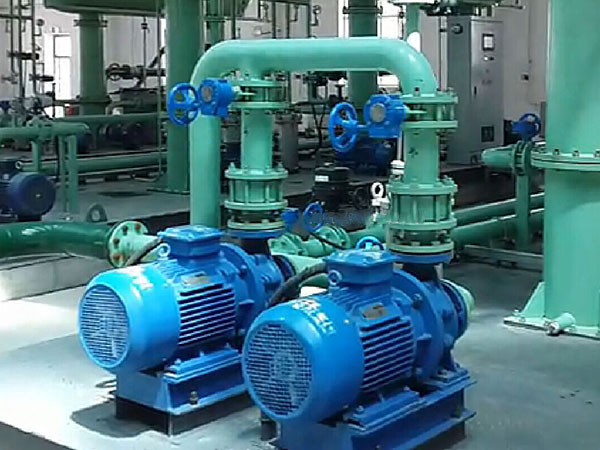The correct operation method of the centrifugal pump should be: firstly open the inlet valve completely, close the outlet valve, start the motor, and then gradually open the outlet valve after the speed is normal, and adjust to the required working condition.
First, the correct operation method of the centrifugal pump
The operation of a centrifugal pump can be divided into three steps, namely start, run and stop.
Two, start
The following preparations should be made before starting:
(1) Check the integrity of the water pump equipment.
(2) The bearing is filled with oil, the oil level is normal, and the oil quality is qualified
(3) Fully open the inlet valve of the centrifugal pump.
(4) Inject water into the pump or divert water from the vacuum pump (except for back pouring) and open the vent valve to exhaust.
(5) Check the water leakage of the shaft seal, and a little dripping water is suitable for the packing seal.
(6) The direction of rotation of the motor is correct.
After the above preparatory work is completed, the motor can be started. After the speed is normal, check the pressure and current and pay attention to whether there is vibration and noise. After everything is normal, gradually open the outlet valve and adjust to the required working condition. Note that the idling time of closing the valve should not exceed 3 minutes.
Three, run
During the operation, it is mainly a patrol inspection, and the inspection content has four aspects:
1. Inspection of bearings
(1) Bearing temperature does not exceed 75°C.
(2) The bearing chamber must not allow water or impurities to enter, and the oil must not emulsify or turn black.
(3) When rolling bearings are lubricated with thin oil, the oil level should not be lower than the center line of the oil mark.
(4) Whether there is any abnormal sound, abnormal sound usually occurs when the rolling bearing is damaged.
2. Whether the readings of vacuum gauge, pressure gauge and ammeter are normal
(1) The pointer of the vacuum gauge should not swing too much, which may vaporize the pump inlet. In addition, the reading of the vacuum gauge should not be too high. If the reading is too high, the inlet valve may be blocked, stuck or the water level of the suction pool may be lowered.
(2) The reading of the outlet pressure gauge is too low, which may be due to severe wear of the sealing ring and guide vane sleeve. The gap between the stator and the rotor is too large, or the outlet valve is opened too much, the flow is large and the head is low.
(3) If the reading of the ammeter is too large, it may be due to the large flow or friction between the stator and the rotor.
3. Whether the pump unit has a large vibration, the reasons for the vibration are:
(1) The axis lines of the water pump and the motor are not aligned.
(2) The anchor bolts of the water pump or motor are loose, or the foundation is not firm.
(3) The mass of the rotor is unbalanced.
(4) The pump operates at a small flow rate, resulting in radial force, backflow, and cavitation.
4. Whether the sealing work is normal
(1) The K-shaped dynamic seal will not leak during normal operation.
(2) If there is a cooling water device, check whether the water flow is normal.

4. Stop the pump
(1) When the centrifugal pump is stopped, the outlet valve should be closed first, so as to prevent the failure of the check valve and cause the pressure water in the outlet pipe to flow back into the pump, causing the impeller to reverse and causing damage to the pump.
(2) If the inertia is small when the pump is stopped, that is, the pump stops soon after the power is cut off, it means that there is mocha or eccentricity in the pump.
V. Conclusion
The three steps of starting, running and stopping the centrifugal pump are very important, but the most important thing is the adjustment of the outlet valve. If it is in the state of suction, the opening of the outlet valve can be relatively larger, and if it is in the state of backfilling, the opening of the outlet valve can be relatively smaller. The closer the working point of the outlet valve adjustment is to the design point of the pump, the better, so that the actual flow state can closely match the theoretical design, the pump has high operating efficiency and saves resources. Because the high-efficiency points of the pump are all at or near the design point, of course, the premise is that the current is not overloaded in the end.




